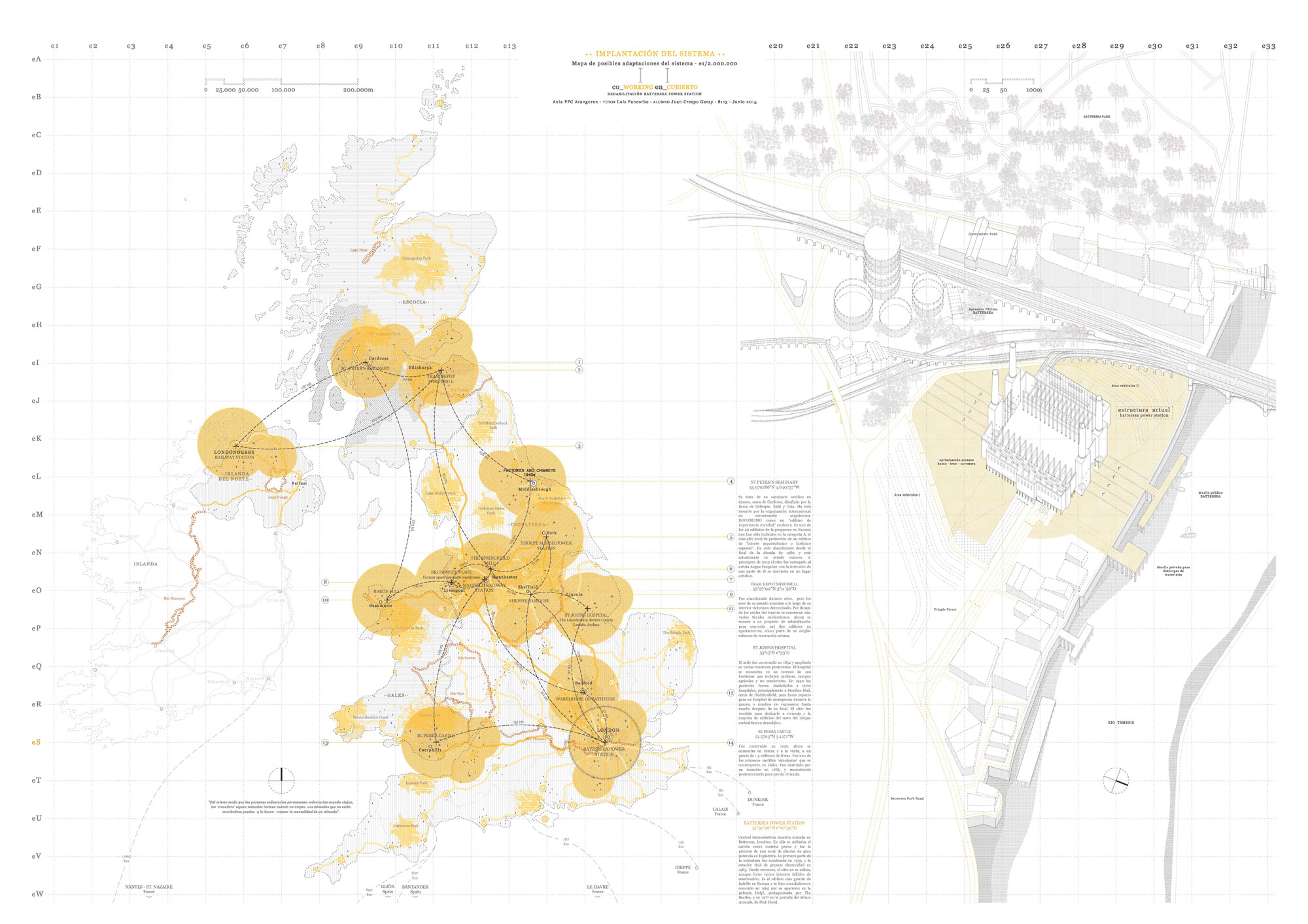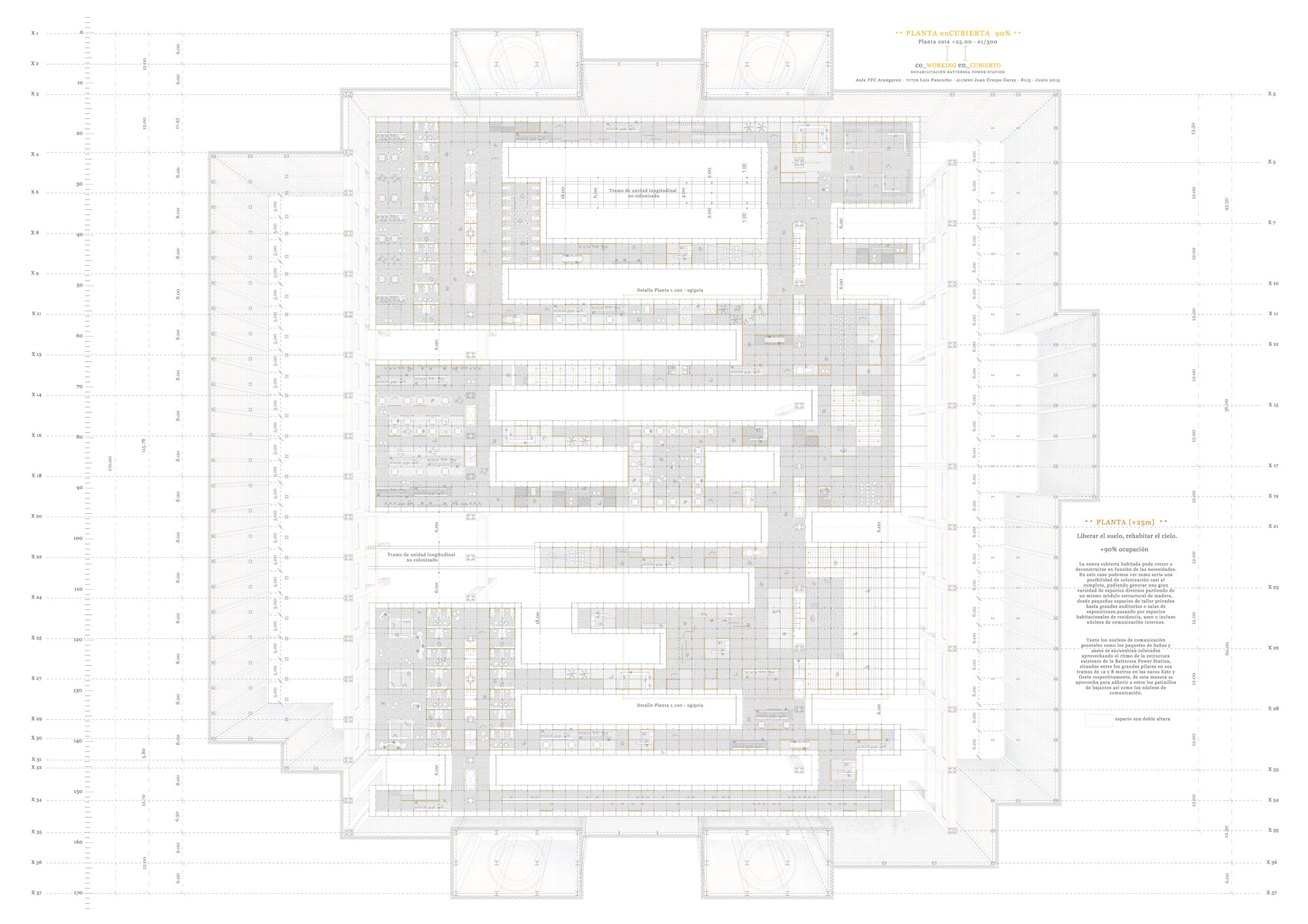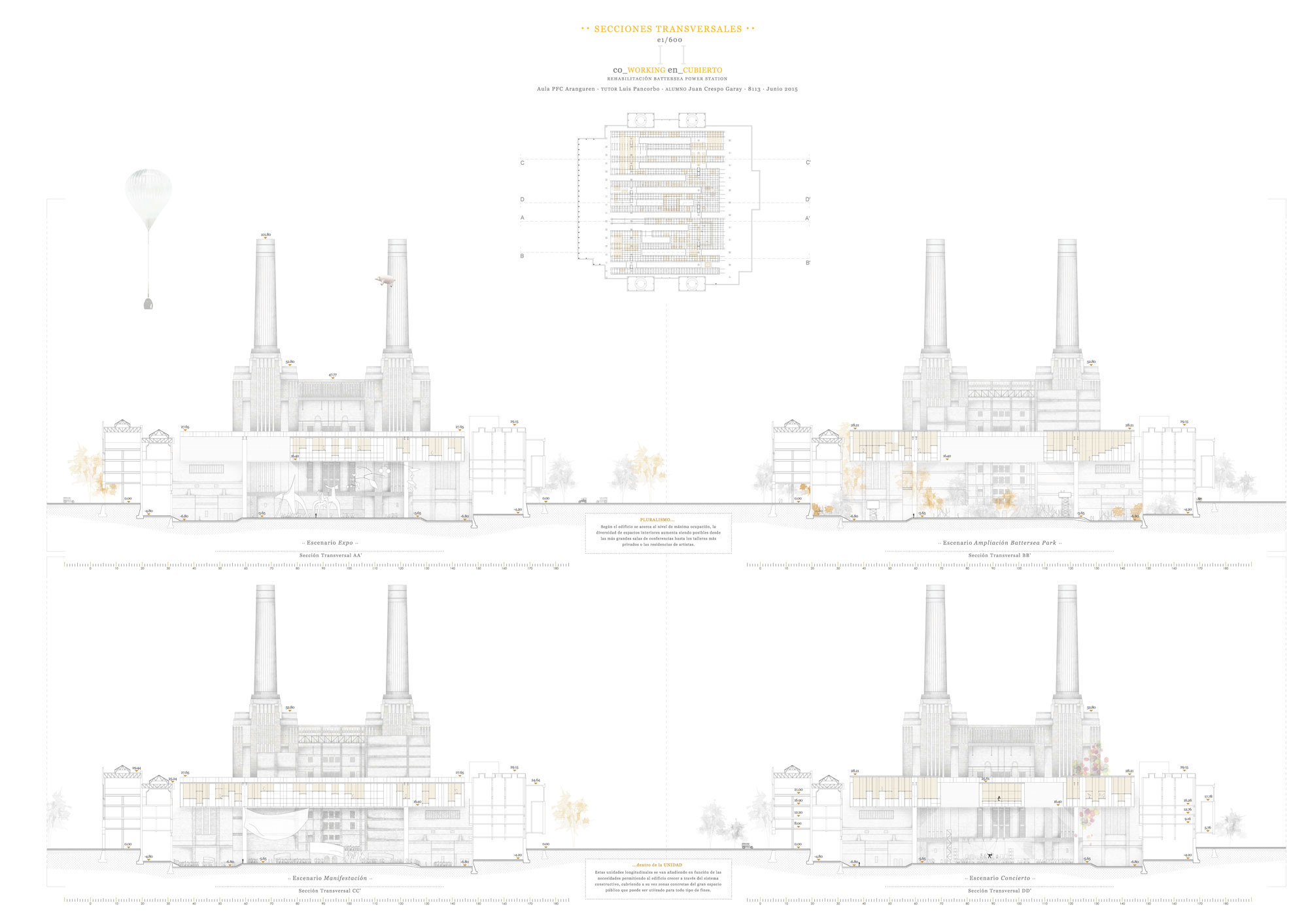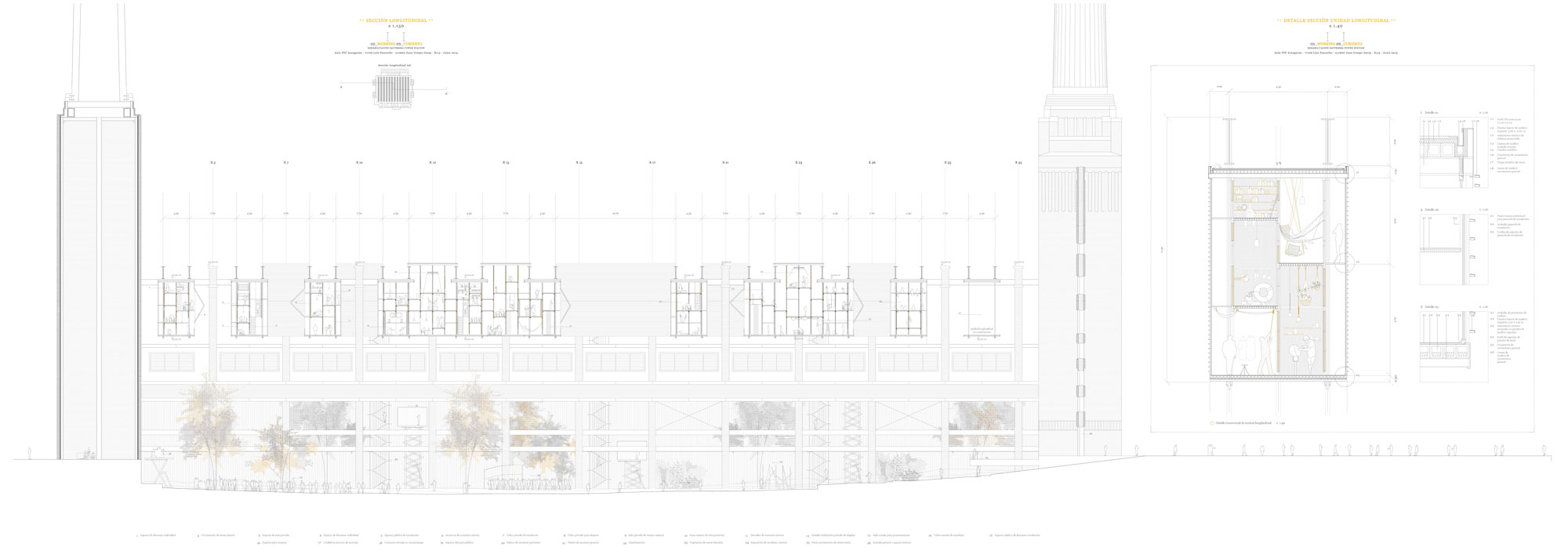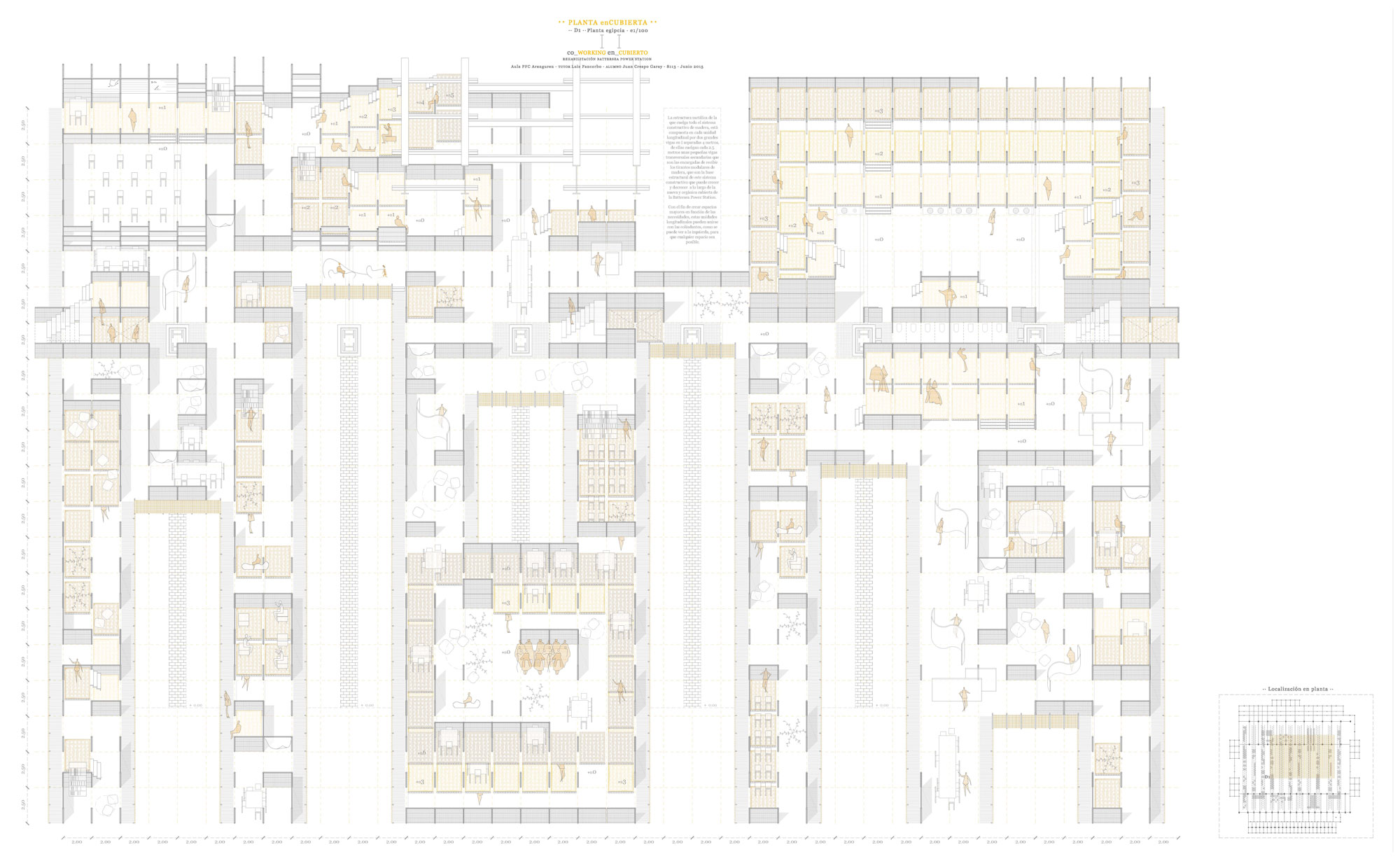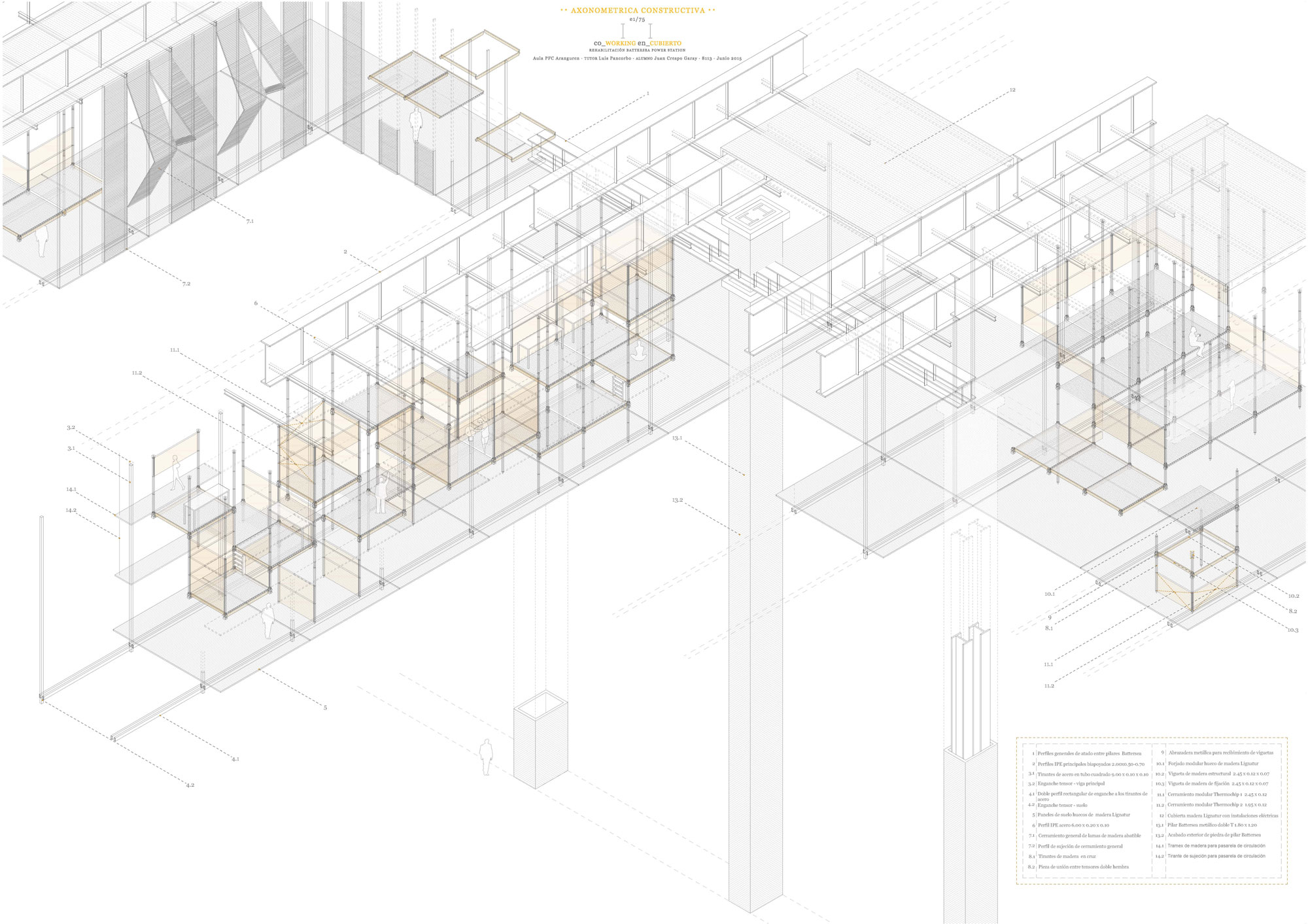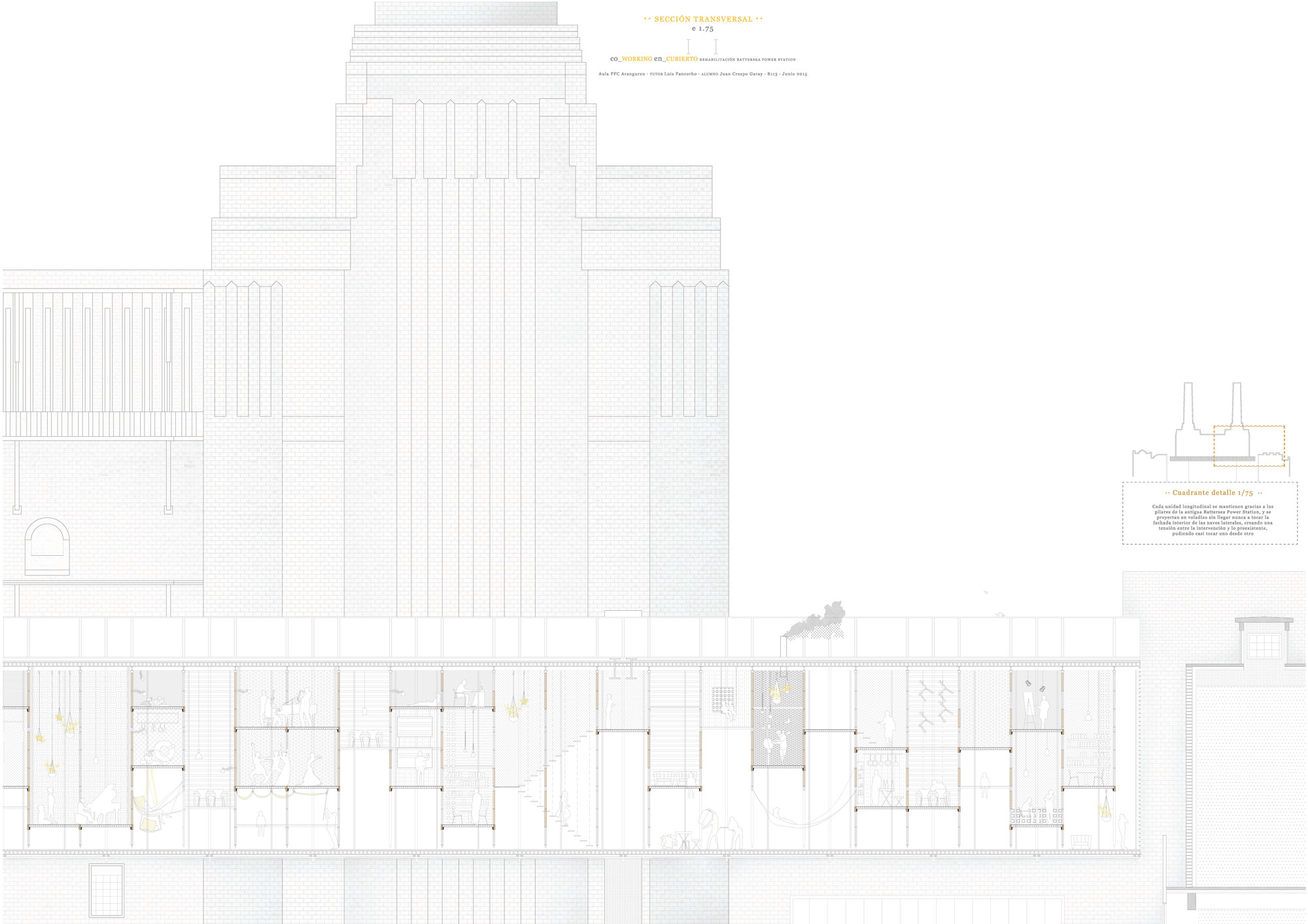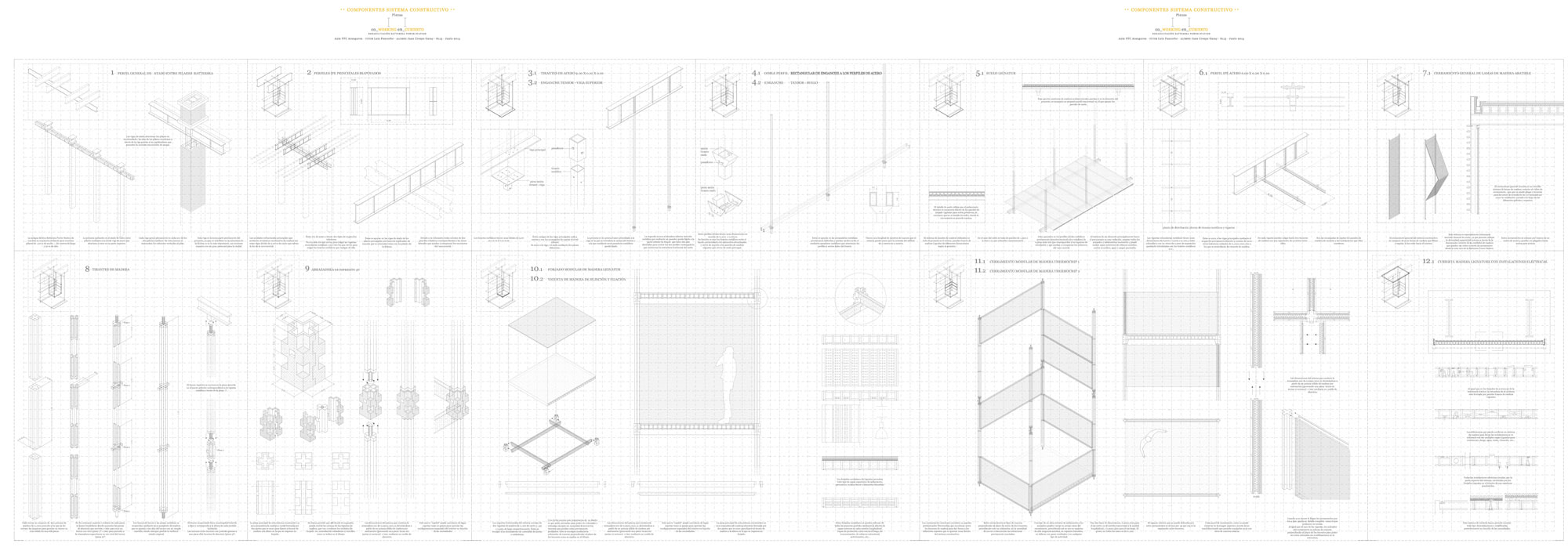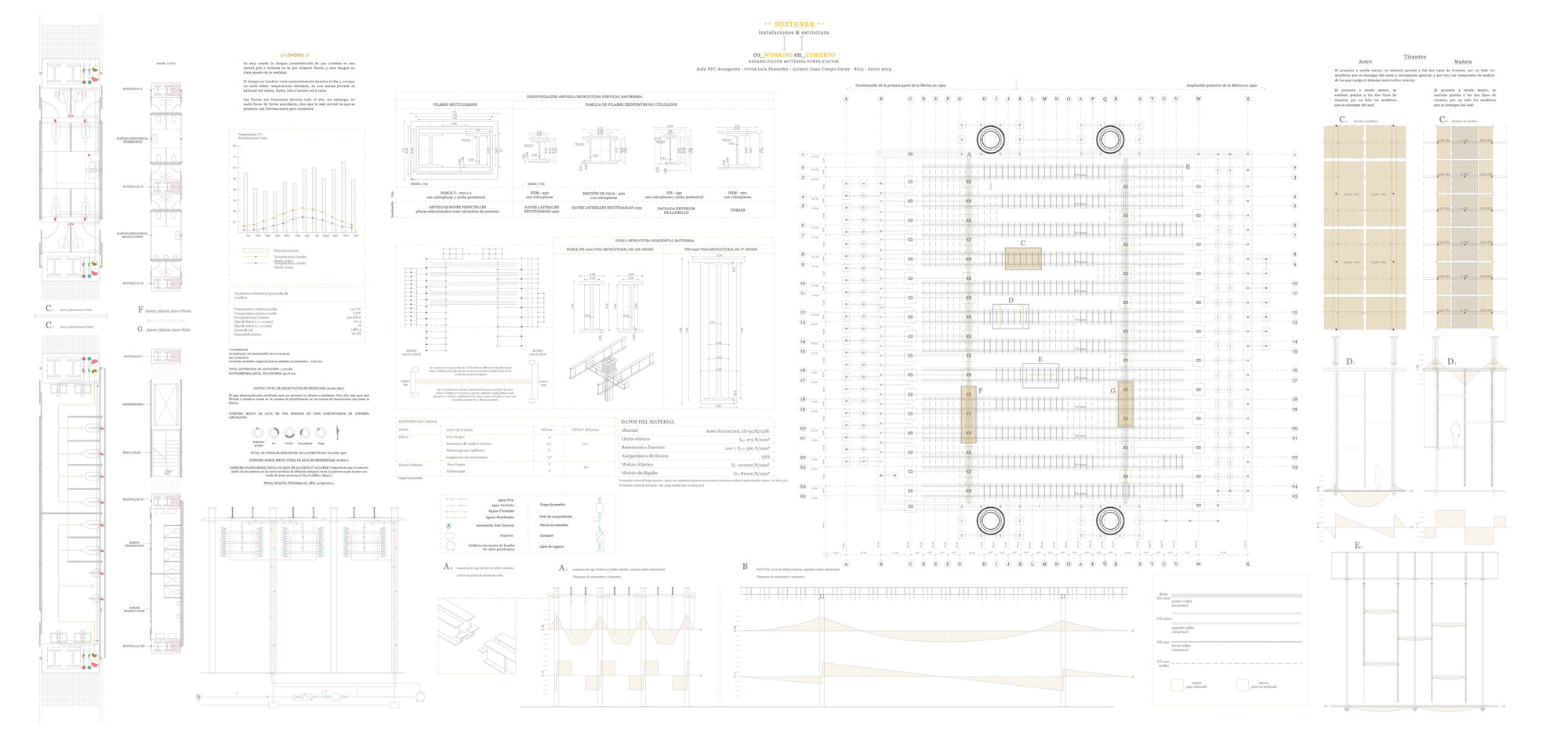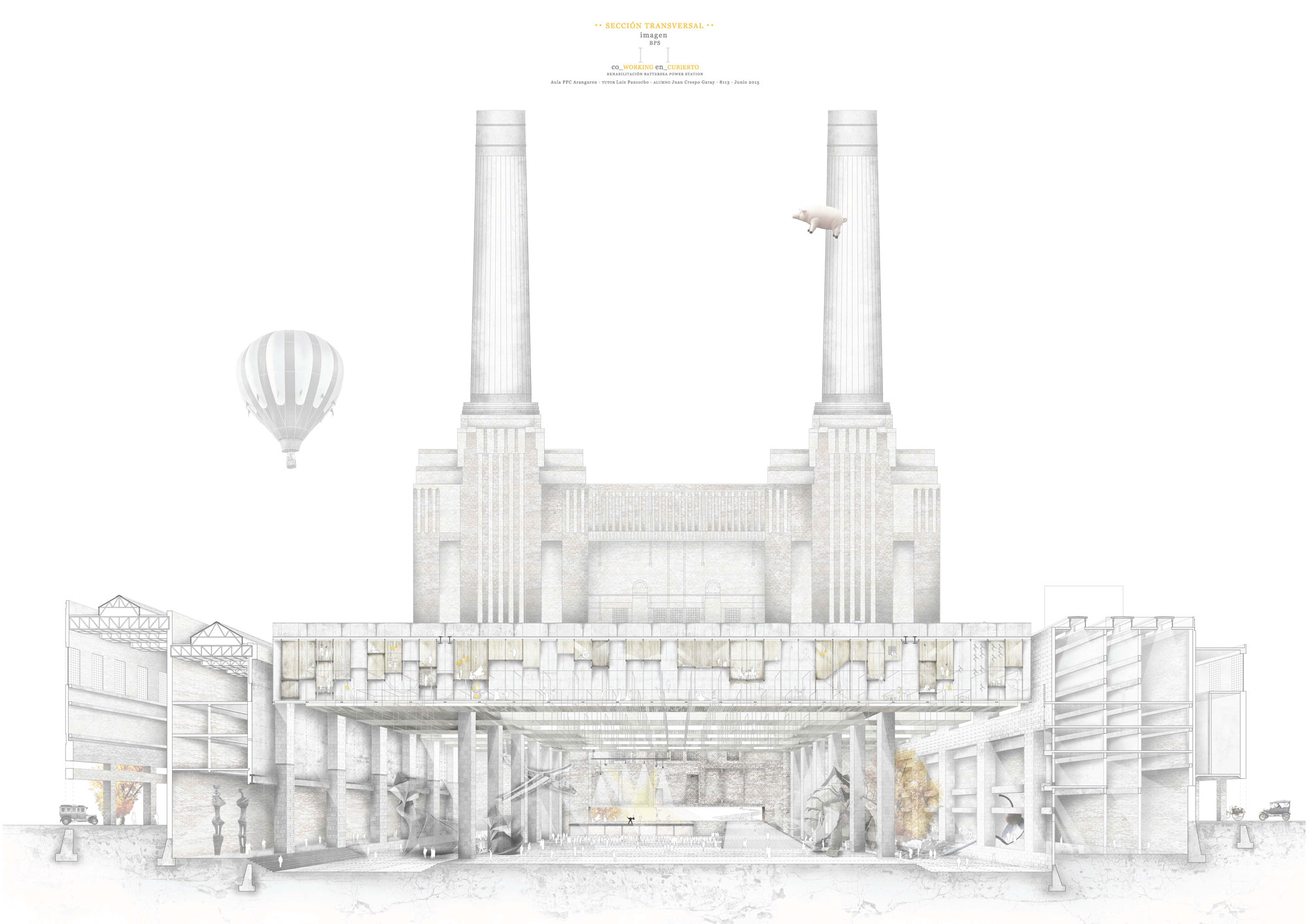☉ Battersea Power Station is an academic project by Juan Crespo Garay for ETSA Madrid in 2015. It is located in London United Kingdom in an industrial and riverside setting. Its scale is large. Key materials are brick and wood.
Today, this factory is conceived as an abandoned icon, a landmark for the city that is slowly being forgotten. It was the first of a serie of high-powered thermoelectric plants in England, in the process of power distribution “National Grid”, which used coal as feedstock. Built in two phases, the first one, in 1939, had two fireplaces, and the second, in the 50s, appeared to be an identical replica from the outside, but nevertheless its structural analysis evidence the difference.
Its size, 160 x 170 meters and 50 meters high, with chimneys rising to 103 meters, transform it into not only a historical icon but also a visual landmark that can be seen from many points. However, the station stopped generating electricity in 1983 and since then, despite numerous attempts and proposals to reactivate it, has been destroyed gradually.
This conception of the factory as urban forgotten icon, led me to understand it as an independent building of the rest of the city, an internal centralized entity that can live with their own past and autonomous space, but self-sufficiently. The Coworking will be able to accommodate all types of functions such as workshops, teaching areas, conference rooms, auditoriums, public and private exhibition spaces, service spaces and residences. This intervention will be able to increase and decrease the deck of the factory depending on the needs.
This idea of organization will transform the factory and its old skeleton in an organic architectural space that meets the needs of the city. The two elements taken into account when deciding what to respect are, on the one hand the old Battersea brick facade, with a level II of protection, and secondly, the three major spaces of the factory, where today many popular activities of all types occur, from sporting events to concerts and demonstrations through all kinds of exhibitions.
Do not modify nor disrupt these elements lead us to think of the cover as the best location for the project. The great value of these spaces and the factory is in the vast emptiness and its infinite possibilities for a city like London, as a place where popular culture of its inhabitants and the rest of the world can really express itself, and where anything can happen.
This new cover keeps the factory function that this building originally housed, with a varied program of workshops, art exhibition and residency. Taking into account also the priorities to respect what is precious to the inhabitants of the city, which in this case are protected exterior walls of the factory, and the three large spaces, we realize that the ideal should be a building that improves these spaces, giving prominence to the public space.
The different structural rhythm between the pillars of the two ships, wich have been built in 1939 and 1950 respectively, will be taken into account. The only permanent part of the intervention is the first structural order. The following structural order are the metal sections that hold the wood construction system. The following minor structural orders correspond to the internal structure of the interior spaces formed of wood construction system, which creates the whole project. The most important consideration when designing the building system are the quality of the spaces, the ability to create spaces of all possible sizes, and always the option to grow without modifying the already built.
